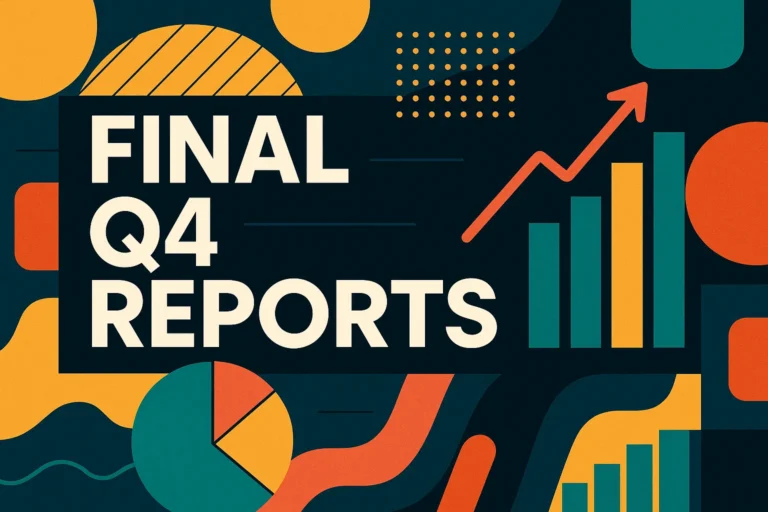News & Events
Knowledge base
News & Events
Knowledge base

Details
Upcoming Events
-
17 DEC 2025
 Eco
Q4 Earnings Reports: December 17 Corporate Financial Disclosures
Eco
Q4 Earnings Reports: December 17 Corporate Financial Disclosures -
24 DEC 2025
 Eco
Christmas Eve Shortened Trading Session: What Traders Need to Know
Eco
Christmas Eve Shortened Trading Session: What Traders Need to Know -
31 DEC 2025
 Eco
Year-End Portfolio Rebalancing: Market Impact and Investment Strategy
Eco
Year-End Portfolio Rebalancing: Market Impact and Investment Strategy
LIVE

Begin your trading journey with Pocket Option using this comprehensive how to trade guide.
Platform updates
-
23 Sep2025
 Get 95% Trading Boost with promo codeGet a 95% boost with promo code and find out.
Get 95% Trading Boost with promo codeGet a 95% boost with promo code and find out. -
22 Sep2025
 Golden Season Trading Journey – Unlock Global Destinations & BonusesReady to transform your trading experience into an extraordinary global adventure? Golden Season brings you the perfect opportunity to combine your passion for trading with wanderlust, offering exclusive bonuses and
Golden Season Trading Journey – Unlock Global Destinations & BonusesReady to transform your trading experience into an extraordinary global adventure? Golden Season brings you the perfect opportunity to combine your passion for trading with wanderlust, offering exclusive bonuses and -
18 Sep2025
 Get Up to 10% Cashback on Trading Losses – Reduce Risk with Pocket BrokerSmart traders know that managing risk is just as important as chasing profits. That's why we've created a revolutionary feature that transforms how you approach trading risk
Get Up to 10% Cashback on Trading Losses – Reduce Risk with Pocket BrokerSmart traders know that managing risk is just as important as chasing profits. That's why we've created a revolutionary feature that transforms how you approach trading risk -
16 Sep2025
 Champion Trading Promo – Trade Like a Pro Until September 28Step into the winner's circle with our exclusive champion trading promotion! Whether you're a seasoned trader or just starting your journey, this limited-time offer gives you the perfect opportunity to
Champion Trading Promo – Trade Like a Pro Until September 28Step into the winner's circle with our exclusive champion trading promotion! Whether you're a seasoned trader or just starting your journey, this limited-time offer gives you the perfect opportunity to -
3 Sep2025
 Grow Your Balance Challenge Season 2 – Win Big Trading PrizesThe most anticipated trading competition is back with even bigger rewards and greater opportunities! Whether you're a seasoned trader looking for a rematch or a newcomer ready to prove your
Grow Your Balance Challenge Season 2 – Win Big Trading PrizesThe most anticipated trading competition is back with even bigger rewards and greater opportunities! Whether you're a seasoned trader looking for a rematch or a newcomer ready to prove your -
2 Sep2025
 Trade Like a Pro: 100% Bonuses with Pocket OptionThe world of trading shares many parallels with professional sports - both require strategy, timing, and mental focus to succeed. At Pocket Broker, we've designed our platform to help you
Trade Like a Pro: 100% Bonuses with Pocket OptionThe world of trading shares many parallels with professional sports - both require strategy, timing, and mental focus to succeed. At Pocket Broker, we've designed our platform to help you -
29 Aug2025
 Magic 8 Weekend Rush – 88% Bonus & 8 Green Gems Prize | Trading ContestReady to experience the magic of 8? This Weekend Rush celebrates the power of lucky number 8 with an incredible 88% bonus opportunity and exciting prizes for skilled traders. Whether
Magic 8 Weekend Rush – 88% Bonus & 8 Green Gems Prize | Trading ContestReady to experience the magic of 8? This Weekend Rush celebrates the power of lucky number 8 with an incredible 88% bonus opportunity and exciting prizes for skilled traders. Whether -
19 Aug2025
 Best Win Rate Trading Challenge – Pocket Option Broker CompetitionThe Best Win Rate Challenge is your chance to showcase your trading expertise and win valuable rewards. This exclusive competition, hosted by the Pocket Option Broker community, brings together skilled
Best Win Rate Trading Challenge – Pocket Option Broker CompetitionThe Best Win Rate Challenge is your chance to showcase your trading expertise and win valuable rewards. This exclusive competition, hosted by the Pocket Option Broker community, brings together skilled -
13 Aug2025
 Weekend Rush Winners Announced – Congratulations to Our Top TradersWe're excited to celebrate the incredible trading activity from this past weekend! Our Weekend Rush competition has concluded, and we're thrilled to recognize the outstanding performance of our most dedicated
Weekend Rush Winners Announced – Congratulations to Our Top TradersWe're excited to celebrate the incredible trading activity from this past weekend! Our Weekend Rush competition has concluded, and we're thrilled to recognize the outstanding performance of our most dedicated -
12 Aug2025
 Track Inflation Like a Pro: CPI Release Calendar for Smart Currency TradingUnderstanding inflation trends is crucial for successful currency trading. The Consumer Price Index (CPI) serves as one of the most important economic indicators, directly influencing central bank decisions and currency
Track Inflation Like a Pro: CPI Release Calendar for Smart Currency TradingUnderstanding inflation trends is crucial for successful currency trading. The Consumer Price Index (CPI) serves as one of the most important economic indicators, directly influencing central bank decisions and currency
Personal feed
All topics

28 Aug 2025
5 min to read
Markets
Option Trading: Opportunities, Risks, and Strategies for 2025
39,816
0
0

20 Mar 2025
9 min to read
Markets
Broadcom (AVGO) Stock Forecast 2030: Strategic Insights for Tech Investors
115,634
0
0

08 Jul 2025
6 min to read
Trading
Bitcoin Pi Cycle Top Indicator: Your Precise Market Exit Strategy
119,968
0
0

05 Jul 2025
9 min to read
Regulation and safety
Is Copy Trading Legit: Understanding Its Legitimacy and Potential
118,853
0
0

22 Jul 2025
8 min to read
Markets
Pocket Option's Mathematical Framework: Calculating Joby Stock Price Prediction 2040 with 85% Confidence Intervals
119,317
0
0
Top Assets Payout
Updated at 03:13 UTC+2
Stock
Commodity
Cryptocurrency
Currency
Index
Stock
Asset Name
Payout
50%
50%
50%
50%
50%
50%
50%
50%
45%
45%
Today s Top Traders
Statistics for the last 24 hours
-
 Henry A. #1Trading turnover: $83,993Average trade: $31Profit. trades: 54%
Henry A. #1Trading turnover: $83,993Average trade: $31Profit. trades: 54% -
 Alghurabi A.Trading turnover: $22,247Average trade: $179Profit. trades: 64%
Alghurabi A.Trading turnover: $22,247Average trade: $179Profit. trades: 64% -
 Carlos Omar A.Trading turnover: $13,360Average trade: $18Profit. trades: 53%
Carlos Omar A.Trading turnover: $13,360Average trade: $18Profit. trades: 53% -
 Ariel Alejandro V.Trading turnover: $11,203Average trade: $50Profit. trades: 60%
Ariel Alejandro V.Trading turnover: $11,203Average trade: $50Profit. trades: 60% -
 Juan Carlos A.Trading turnover: $8,692Average trade: $3Profit. trades: 50%
Juan Carlos A.Trading turnover: $8,692Average trade: $3Profit. trades: 50% -
 Mukhammet A.Trading turnover: $6,956Average trade: $6Profit. trades: 49%
Mukhammet A.Trading turnover: $6,956Average trade: $6Profit. trades: 49%
Knowledge base
-
 11 February 20253 min to read
11 February 20253 min to read by Mieszko MichalskiTrading API EssentialsIn today’s fast-moving markets, trading APIs are game-changing tools, enabling automated strategies, real-time data, and seamless platform integration.131,24421Trading
by Mieszko MichalskiTrading API EssentialsIn today’s fast-moving markets, trading APIs are game-changing tools, enabling automated strategies, real-time data, and seamless platform integration.131,24421Trading -
 3 March 20255 min to readAI Investment Opportunities: Exploring the $3 AI Stock PhenomenonThe $3 AI stock trend is capturing investors’ attention. This article explores real-world cases, strategies, and results behind this intriguing investment opportunity.115,84401Markets
3 March 20255 min to readAI Investment Opportunities: Exploring the $3 AI Stock PhenomenonThe $3 AI stock trend is capturing investors’ attention. This article explores real-world cases, strategies, and results behind this intriguing investment opportunity.115,84401Markets -
 7 February 20255 min to readWill gold rate go up or decrease in сoming days?Gold price fluctuations can lead to huge profits or losses, making it a critical asset for experienced investors. We know how to help you analyze the market and make the114,93400Markets
7 February 20255 min to readWill gold rate go up or decrease in сoming days?Gold price fluctuations can lead to huge profits or losses, making it a critical asset for experienced investors. We know how to help you analyze the market and make the114,93400Markets -
 4 September 20254 min to read
4 September 20254 min to read by Carolina SilvaHow Much Would I Have If I Invested $10,000 in Bitcoin in 2010?A $10,000 Bitcoin investment in 2010 could be worth $6.25 billion in 2025. Learn about Bitcoin’s rise and how to trade it on Pocket Option.126,98400Learning
by Carolina SilvaHow Much Would I Have If I Invested $10,000 in Bitcoin in 2010?A $10,000 Bitcoin investment in 2010 could be worth $6.25 billion in 2025. Learn about Bitcoin’s rise and how to trade it on Pocket Option.126,98400Learning
Interesting
-
 Trading platforms18 August 202522 min to read
Trading platforms18 August 202522 min to read by Carolina SilvaDownload Trading App for PC – Your Quick Start to Smarter TradingWhen you decide to download the trading app for PC, you are choosing not just a program, but a comprehensive solution for professional trading.142,37800
by Carolina SilvaDownload Trading App for PC – Your Quick Start to Smarter TradingWhen you decide to download the trading app for PC, you are choosing not just a program, but a comprehensive solution for professional trading.142,37800 -
 Reviews10 February 202551 min to readTakashi Kotegawa Trading StrategyTakashi Kotegawa, better known as BNF, is one of Japan’s most famous traders. Starting with just $15,000, he grew his fortune to $150 million through disciplined, high-volume stock trading.135,54300
Reviews10 February 202551 min to readTakashi Kotegawa Trading StrategyTakashi Kotegawa, better known as BNF, is one of Japan’s most famous traders. Starting with just $15,000, he grew his fortune to $150 million through disciplined, high-volume stock trading.135,54300 -
 Bonuses and promotions20 January 20256 min to readDeposit BonusPocket Option bonuses: get 50% on your first deposit and up to 100% on next ones, plus promo codes, cashback, and loyalty rewards.121,36500
Bonuses and promotions20 January 20256 min to readDeposit BonusPocket Option bonuses: get 50% on your first deposit and up to 100% on next ones, plus promo codes, cashback, and loyalty rewards.121,36500 -
 Trading platforms19 August 202517 min to read
Trading platforms19 August 202517 min to read by Carolina SilvaDay Trading Simulator No Login: Instant Access Trading Practice PlatformsMastering Day Trading Without Risk Day trading is fast-paced and high-risk, requiring skill and discipline. Simulators let traders practice in realistic market conditions without financial loss.151,53100
by Carolina SilvaDay Trading Simulator No Login: Instant Access Trading Practice PlatformsMastering Day Trading Without Risk Day trading is fast-paced and high-risk, requiring skill and discipline. Simulators let traders practice in realistic market conditions without financial loss.151,53100